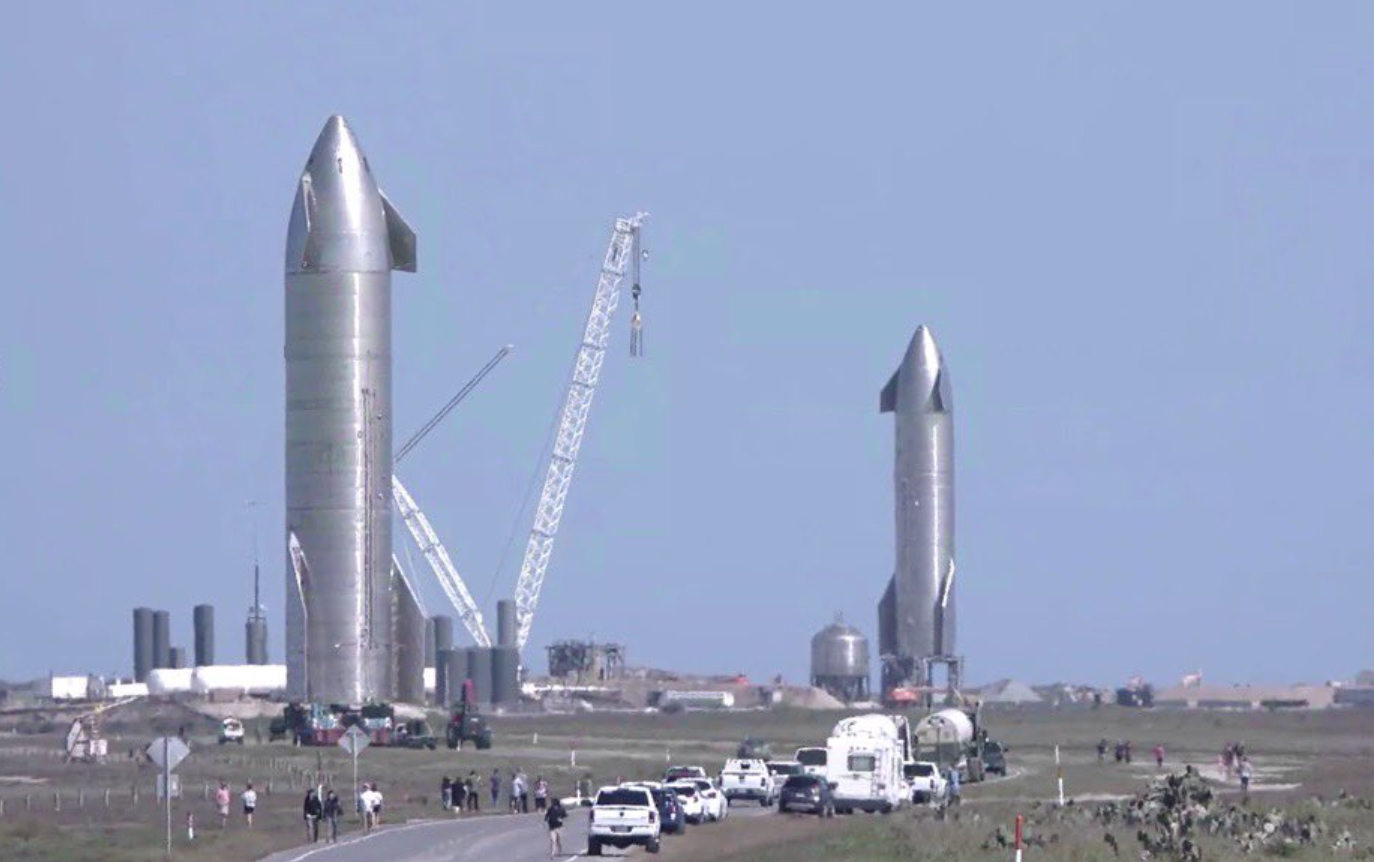
SpaceX's latest Starship prototype just roared to life.
The Starship SN10 ("Serial No. 10") vehicle performed its first "static fire" test on Tuesday (Feb. 23), lighting up its three Raptor engines for a few seconds at 6:03 p.m. EST (2303 GMT) at SpaceX's South Texas site, near the Gulf Coast settlement of Boca Chica Village.
Static fires, in which engines briefly ignite while a rocket stays anchored to the ground, are a common preflight checkout for SpaceX. If all went well with today's test, SN10 remains on track to launch soon — perhaps as early as Thursday (Feb. 25) — on a 6-mile-high (10 kilometers) demonstration flight into the South Texas skies.
Starship and Super Heavy: SpaceX's Mars-colonizing vehicles in images
Starship SN10 static fire! Hopefully, it was a great test. 🔥🚀🔥@NASASpaceflight pic.twitter.com/J6cVUypRgYFebruary 23, 2021
It will be the third high-altitude test for a Starship vehicle, after similar jaunts in December 2020 and Feb. 2 of this year by SN10's two immediate predecessors, SN8 and SN9. Both of those flights went well until the very end; SN8 and SN9 slammed hard onto their landing pads, exploding in dramatic fireballs.
Such flights are a crucial part of the development path for Starship, which SpaceX sees as the vehicle that will make Mars colonization economically feasible. The Starship system will consist of two fully reusable parts: a 165-foot-tall (50 meters) spacecraft called Starship and a huge rocket known as Super Heavy.
The final Starship will have six Raptors, and Super Heavy will sport about 30 of the engines, SpaceX founder and CEO Elon Musk has said. Starship will be powerful enough to launch itself off the moon and Mars, but the spacecraft will need Super Heavy to get off Earth.
Get the Space.com Newsletter
Breaking space news, the latest updates on rocket launches, skywatching events and more!
We'll likely see many more Starship test flights over the coming weeks and months, no matter how SN10's launch goes. Musk recently said that SpaceX aims to launch a prototype to Earth orbit this year, and he envisions Starship carrying people regularly by 2023.
Mike Wall is the author of "Out There" (Grand Central Publishing, 2018; illustrated by Karl Tate), a book about the search for alien life. Follow him on Twitter @michaeldwall. Follow us on Twitter @Spacedotcom or Facebook.
Join our Space Forums to keep talking space on the latest missions, night sky and more! And if you have a news tip, correction or comment, let us know at: community@space.com.

Michael Wall is a Senior Space Writer with Space.com and joined the team in 2010. He primarily covers exoplanets, spaceflight and military space, but has been known to dabble in the space art beat. His book about the search for alien life, "Out There," was published on Nov. 13, 2018. Before becoming a science writer, Michael worked as a herpetologist and wildlife biologist. He has a Ph.D. in evolutionary biology from the University of Sydney, Australia, a bachelor's degree from the University of Arizona, and a graduate certificate in science writing from the University of California, Santa Cruz. To find out what his latest project is, you can follow Michael on Twitter.









